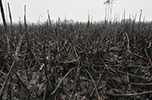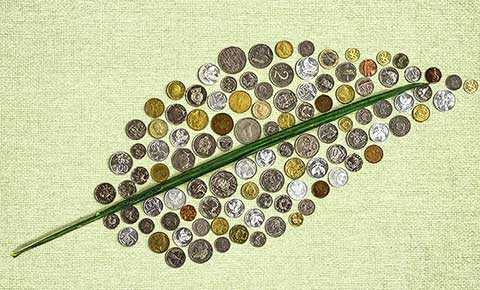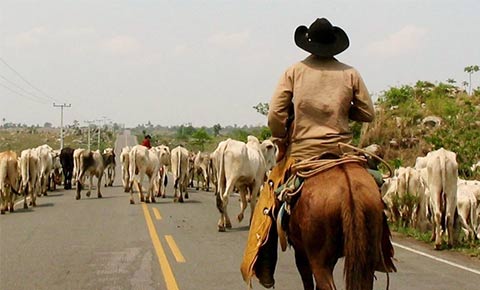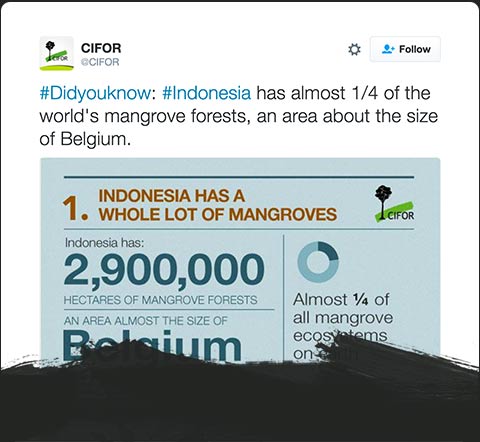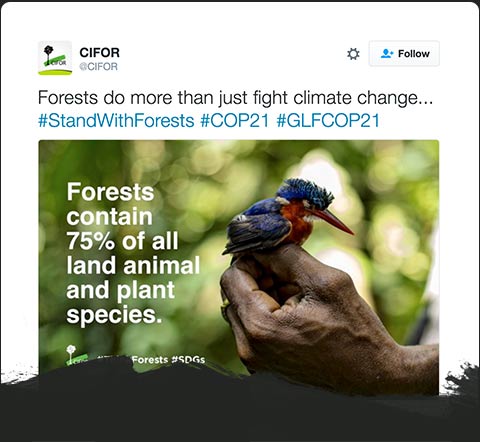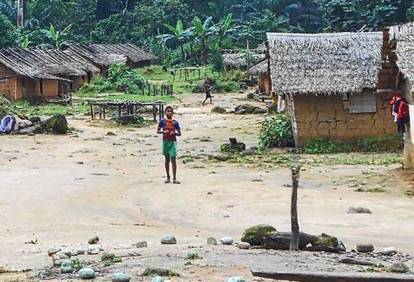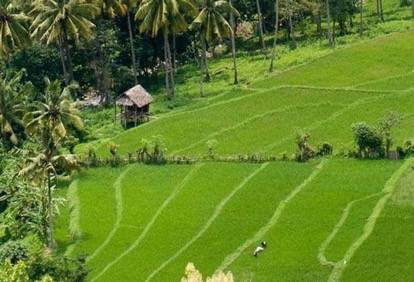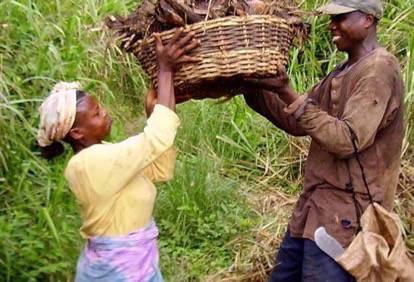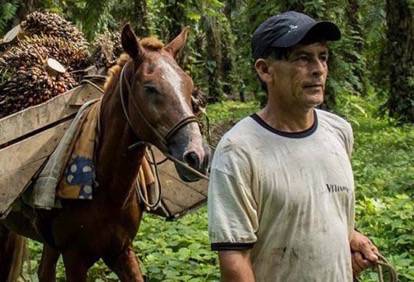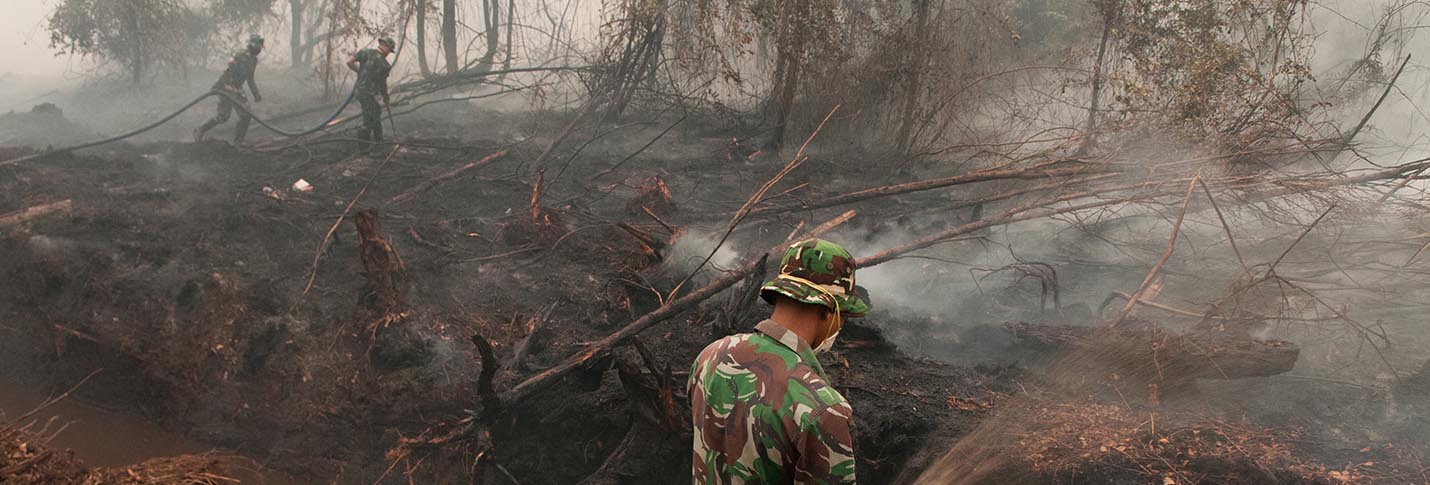
Shedding light on haze
CIFOR engages with politicians and the media to tackle fire and haze in Indonesia
Fires are an annual event in Indonesia’s peatlands and forests. But deforestation and previous burning now make the landscape more fire prone than ever. Some 2.6 million hectares of forest are reported to have been burned in Borneo and Sumatra in 2015, and 43 million people on Sumatra and Kalimantan to have been exposed to toxic smoke. Severe air pollution has affected Singapore and Malaysia.
CIFOR has been deeply involved in researching the causes and consequences of the annual fires for several years. In 2015 we significantly stepped up our direct engagement with policy makers and media, as well as researchers and practitioners, at sub-national, national and international levels.
CIFOR Scientist Herry Purnomo used primetime television interviews and live dialogues on Indonesian channels Metro TV, Kompas TV, Net TV, TV One, as well as an article in The Conversation, to bring scientific rigor to the debate. CIFOR and its scientists were cited 1890 times in national and international media between August and December 2015, while CIFOR Director General Peter Holmgren was interviewed on BBC World Service’s NewsDay and Bloomberg TV’s Trending Business.
“What’s clear is that the economic impact of fires… is going to far outweigh the benefits of expanding agricultural land.”
Direct engagement with government ministers and policy makers was a focus of CIFOR’s work in 2015. Three days of workshops with the Minister of Environment and Forestry to present the results of CIFOR’s studies, and presentations to the Parliamentary Commission during October 2015 are the start of closer collaboration between CIFOR and the Indonesian government on the fires. In December 2015, CIFOR and University of Riau facilitated the development of Forum Negeri Bersih Jerebu (Haze-free Multistakeholder Forum) to collectively act to prevent fire and haze in the future.
CIFOR advances human well-being, environmental conservation and equity by conducting research to help shape policies and practices that affect forest landscapes in developing countries. CIFOR is a member of the CGIAR Consortium. Our headquarters are in Bogor, Indonesia, with offices in Asia, Africa and Latin America.
CIFOR leads the CGIAR Research Program on Forests, Trees and Agroforestry.
foreststreesagroforestry.orgCIFOR is also a member of the CGIAR Research Program on Climate Change, Agriculture and Food Security (CCAFS).
ccafs.cgiar.orgFlagship projects
Partners and processes
In 2015, CIFOR and its stakeholders benefited from:
-
144
-
85
- 33
- 33
-
29
-
35
CIFOR and its partners contribute to the following global processes, frameworks, panels and conventions:

Publications
Demand from stakeholders for CIFOR’s research grew at an unprecedented pace this year. In 2015 we disseminated more than 62,000 knowledge products at events, meetings and on request.
25% increase from 2014
Analysis
-
DG’s column addresses new forest assessments, the World Forestry Congress, and more.
-
At the peak of Indonesia's peatland fires, our scientists went to the field to find clear answers to the haze issue.
-
CIFOR researchers untangle the issues around zero deforestation, dry forests, land tenure, satellite data and more.
Numbers
77% increase compared to 499,000 views in 2014
127% increase compared to #GLFCOP20 tweets
CIFOR's research is designed to have a far reach, aiming to inform policy and effect real change on the ground. We foster a strong "impact culture" through:
A focus on gender
From planning research priorities to developing partnerships and communicating findings, gender is integrated throughout our work.
Capacity building
All of our research programs and projects include measures to strengthen both individual and institutional capacity.
Monitoring impact
We use sophisticated monitoring and evaluation techniques to gather feedback and improve our pathways to impact.
Each year, CIFOR's scientific findings reach more people through a communications strategy that combines journalistic approaches, social media and science communication.

 35,200
35,200
total Facebook likes, 24% increase

 37,733
37,733
Twitter followers, 41% increase

 7.5 million
7.5 million
photo views on Flickr, 56% increase

 564k
564k
cumulative video views on YouTube, 36% increase

 5227
5227
LinkedIn followers, 39% increase

 Top 5%
Top 5%
of Most-Viewed on SlideShare, with over 237k views, 42% increase

PHOTO
Selected photos

PHOTO
Selected photos

PHOTO
Selected photos

PHOTO
Selected photos

PHOTO
Selected photos

PHOTO
Selected photos

PHOTO
Selected photos

PHOTO
Selected photos

PHOTO
Selected photos

PHOTO
Selected photos

PHOTO
Selected photos

PHOTO
Selected photos

PHOTO
Selected photos

PHOTO
Selected photos

PHOTO
Selected photos

PHOTO
Selected photos

PHOTO
Selected photos

PHOTO
Selected photos

PHOTO
Selected photos

PHOTO
Selected photos

PHOTO
Selected photos

PHOTO
Selected photos

PHOTO
Selected photos

PHOTO
Selected photos

PHOTO
Selected photos

PHOTO
Selected photos

PHOTO
Selected photos

PHOTO
Selected photos

PHOTO
Selected photos

PHOTO
Selected photos

PHOTO
Selected photos

PHOTO
Selected photos

PHOTO
Selected photos

PHOTO
Selected photos

PHOTO
Selected photos

PHOTO
Selected photos

PHOTO
Selected photos

PHOTO
Selected photos

PHOTO
Selected photos

PHOTO
Selected photos

PHOTO
Selected photos

PHOTO
Selected photos

PHOTO
Selected photos

PHOTO
Selected photos

PHOTO
Selected photos

PHOTO
Selected photos

PHOTO
Selected photos

PHOTO
Selected photos

PHOTO
Selected photos

PHOTO
Selected photos

PHOTO
Selected photos

PHOTO
Selected photos

PHOTO
Selected photos

PHOTO
Selected photos

PHOTO
Selected photos

PHOTO
Selected photos

PHOTO
Selected photos

PHOTO
Selected photos

PHOTO
Selected photos

PHOTO
Selected photos

PHOTO
Selected photos

PHOTO
Selected photos

PHOTO
Selected photos

PHOTO
Selected photos

PHOTO
Selected photos

PHOTO
Selected photos

PHOTO
Selected photos

PHOTO
Selected photos

PHOTO
Selected photos

PHOTO
Selected photos

PHOTO
Selected photos

PHOTO
Selected photos

PHOTO
Selected photos

PHOTO
Selected photos

PHOTO
Selected photos

PHOTO
Selected photos

PHOTO
Selected photos

PHOTO
Selected photos

PHOTO
Selected photos

PHOTO
Selected photos

PHOTO
Selected photos

PHOTO
Selected photos

PHOTO
Selected photos

PHOTO
Selected photos

PHOTO
Selected photos


